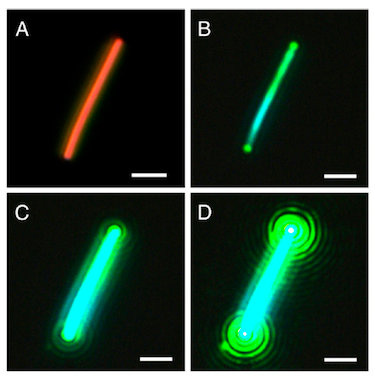Researchers at the University of California at Berkeley and the Lawrence Berkeley National Lab have made novel high-performance and robust lasers from caesium lead halide perovskites nanowires, that could be used in on-chip photonic and spectroscopic applications, such as optical communications, imaging and sensing. The lasing color of the devices can also easily be tuned from green to blue by changing the halide ion.

Nanowire lasers show great promise as miniaturized light sources for optoelectronics. Since they act as both the laser cavity and gain medium, nanowires can be easily incorporated into electronic circuits. Optical gain is the ability of a material to 'amplify' light or to generate more photons than the number of photons it absorbs. A typical laser usually consists of a gain medium encased in an optical cavity containing two opposing mirrors. The gain medium contains two electronic energy levels, and the lower energy level naturally contains more electrons than the upper level. However, by exciting the cavity ' either electrically or by using light ' some electrons can be 'pumped' into the upper state.
At low pumping levels, atoms propelled to the upper level decay spontaneously back to the ground state and emit a photon. However, above a certain pumping threshold, an excited atom can absorb a second photon, and transitions back to the ground state are predominantly caused this way. These two photons are then emitted perfectly in phase, and go on to excite more atoms, which themselves emit photons in turn and so on. The resulting beam of phase-coherent photons is a laser beam.
Researchers recently made nanowire lasers from methyl ammonium lead halides, which are closely related to caesium lead halides. These lasers unfortunately turned out be unstable and degraded rapidly in air. Caesium lead halides have very similar electronic and optical properties to methyl ammonium lead halides but appear to be much more stable in air.
The team grew the caesium lead halide nanowires by placing a thin film of lead iodide (PbI2) in a heated solution of caesium halide. The devices are not only stable under ambient conditions but also during lasing. They can also be grown at temperatures near room temperature (only slight heating at 50°C is required), in contrast to many other nanowire growth methods that need high temperatures and high pressures. Their lasing wavelength can also be easily tuned (from green to blue) by changing the halide ion.

